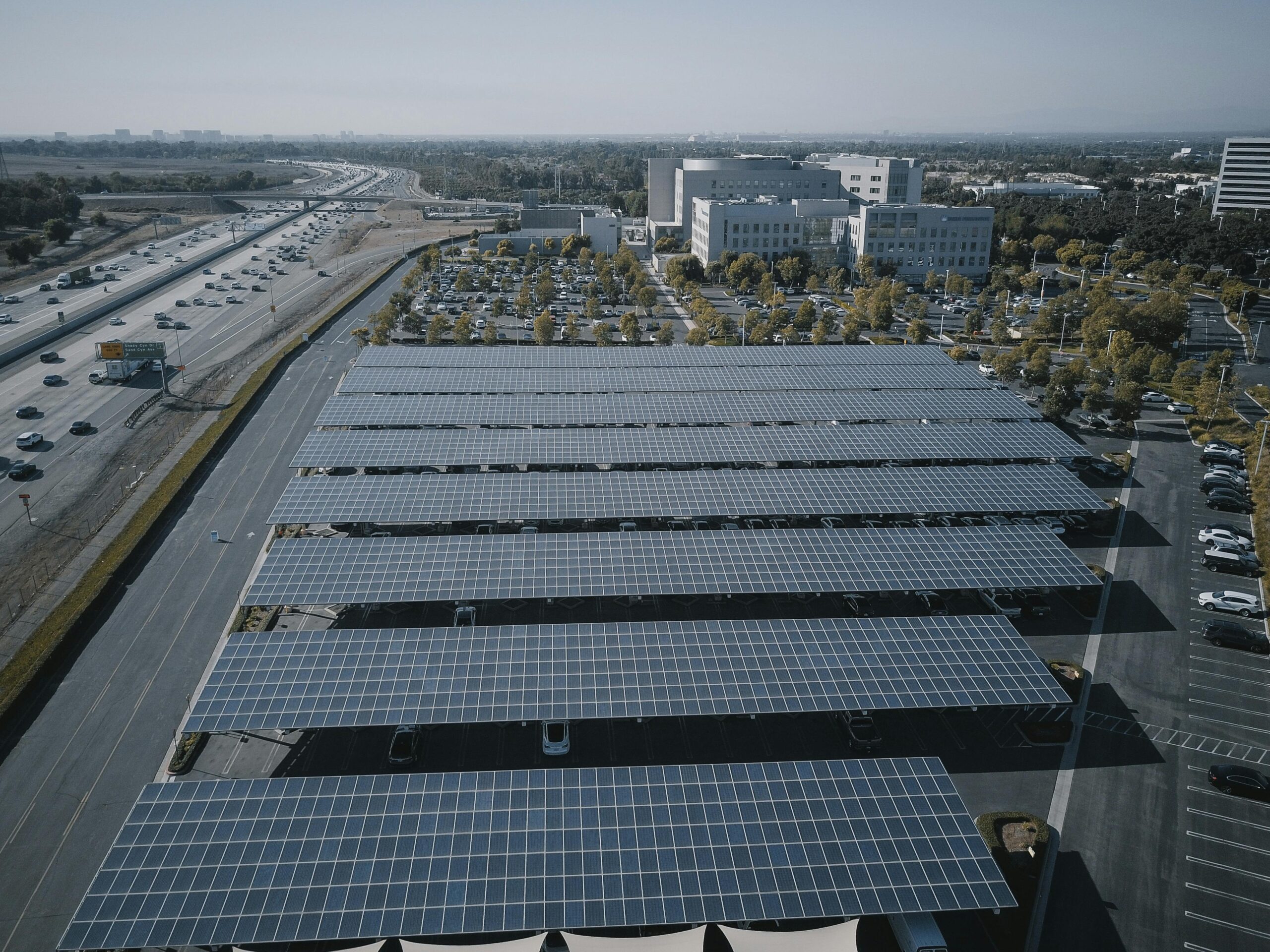Renewable district heating represents a transformative shift in how communities approach energy consumption, combining sustainability with practical efficiency to power modern living spaces.
🌍 Understanding the Foundation of District Heating Systems
District heating systems have existed for decades, but their evolution toward renewable energy sources marks a pivotal moment in environmental stewardship. These centralized systems distribute thermal energy from a production facility to multiple buildings through insulated pipes carrying hot water or steam. Traditional district heating relied heavily on fossil fuels, contributing significantly to carbon emissions and environmental degradation.
The transition to renewable district heating fundamentally reimagines this infrastructure. By incorporating sustainable energy sources such as geothermal heat, solar thermal energy, biomass, and waste heat recovery, communities can dramatically reduce their carbon footprint while maintaining reliable heating services. This approach creates a circular economy where waste becomes a resource and natural processes power our homes and businesses.
Modern renewable district heating networks leverage advanced technology to optimize energy distribution. Smart meters, predictive analytics, and automated controls ensure that heat reaches consumers efficiently, minimizing losses and maximizing sustainability. These intelligent systems adapt to demand fluctuations, weather patterns, and consumption habits, creating a responsive network that serves communities better than ever before.
♻️ The Environmental Imperative Behind the Transition
Climate change demands immediate action, and heating accounts for approximately half of global energy consumption. Buildings generate nearly 40% of energy-related carbon dioxide emissions, with space heating representing the largest portion. Renewable district heating offers a scalable solution to this pressing challenge, enabling entire neighborhoods to decarbonize simultaneously rather than requiring individual property conversions.
The environmental benefits extend beyond carbon reduction. Renewable district heating systems eliminate local air pollution from individual boilers, improving urban air quality and public health outcomes. Communities implementing these systems report measurable decreases in respiratory illnesses and related healthcare costs. The visual pollution of countless chimneys disappears, replaced by cleaner skylines and healthier environments.
Water conservation represents another significant advantage. Many renewable heating technologies require minimal water consumption compared to traditional systems. Geothermal installations, for instance, operate in closed loops that recirculate the same fluid indefinitely, while solar thermal systems use water more efficiently than conventional heating methods.
Biodiversity and Ecosystem Protection
Renewable district heating reduces pressure on natural ecosystems by decreasing fossil fuel extraction. Fewer mining operations, reduced oil drilling, and diminished natural gas infrastructure protect habitats and preserve biodiversity. Communities near these sustainable heating networks often experience ecological recovery as pollution levels decline and environmental stressors diminish.
🔥 Diverse Renewable Energy Sources Powering Communities
The versatility of renewable district heating stems from its ability to integrate multiple energy sources. This diversification ensures reliability while maximizing local renewable resources. Different geographical regions can capitalize on their unique advantages, creating customized solutions that reflect local conditions and opportunities.
Geothermal Energy: Earth’s Natural Heat Bank
Geothermal district heating taps into the planet’s internal heat, accessing temperatures that remain constant regardless of surface weather conditions. This technology proves particularly valuable in volcanic regions or areas with geological heat sources close to the surface. Iceland leads globally in geothermal district heating, with approximately 90% of homes heated through this method. Cities like Reykjavik demonstrate how geothermal energy can reliably serve dense urban populations year-round.
Shallow geothermal systems, utilizing heat pumps and ground-source technology, expand applicability to regions without deep geothermal resources. These systems extract heat from the upper earth layers, where temperatures remain stable, providing efficient heating even in moderate climates. The scalability ranges from small neighborhood networks to city-wide infrastructure.
Biomass: Converting Organic Matter into Thermal Energy
Biomass district heating converts organic materials into usable heat through controlled combustion or gasification. Wood chips, agricultural residues, and energy crops provide renewable fuel sources that support rural economies while reducing waste. Sustainable forestry practices ensure biomass remains carbon-neutral, as growing trees absorb equivalent carbon dioxide to what burning releases.
Advanced biomass facilities incorporate combined heat and power generation, producing both electricity and thermal energy simultaneously. This cogeneration maximizes efficiency, extracting more usable energy from each unit of biomass. Modern emission controls ensure these facilities operate cleanly, meeting stringent environmental standards while providing community heating.
Solar Thermal: Harnessing Sunshine for Warmth
Large-scale solar thermal installations capture sunlight through collectors, converting it directly into heat for district systems. Seasonal thermal energy storage allows summer solar gains to serve winter heating demands, addressing the temporal mismatch between peak solar availability and heating needs. Denmark pioneered this approach, with multiple cities implementing massive solar thermal fields connected to district heating networks.
These systems often incorporate underground thermal storage in aquifers or purpose-built tanks, creating enormous heat batteries that sustain communities through darker months. The combination of solar collection and thermal storage represents engineering innovation at its finest, turning intermittent renewable energy into reliable heating supply.
Waste Heat Recovery: Capturing Energy We Already Generate
Industrial processes, data centers, wastewater treatment plants, and even metro systems generate substantial heat as byproducts. Waste heat recovery captures this otherwise lost energy, channeling it into district heating networks. This approach exemplifies circular economy principles, transforming waste into valuable resources while improving overall energy system efficiency.
Data centers present particularly promising opportunities. These facilities generate massive heat loads requiring cooling systems that consume additional energy. Integrating data center waste heat into district networks creates symbiotic relationships where computing infrastructure contributes to community heating, turning a disposal problem into an energy solution.
💡 Economic Advantages Driving Adoption
Renewable district heating delivers compelling economic benefits alongside environmental improvements. Initial infrastructure investments generate long-term savings through reduced fuel costs, price stability, and decreased maintenance requirements. Communities implementing these systems experience economic advantages that extend far beyond energy bills.
Energy price volatility poses significant risks to households and businesses relying on fossil fuels. Renewable district heating insulates consumers from global commodity market fluctuations. Once infrastructure exists, operational costs remain predictable and generally lower than conventional heating alternatives. This stability enables better financial planning for families and organizations alike.
Job creation represents another substantial economic benefit. Renewable district heating projects require skilled workers for construction, operation, and maintenance. These jobs typically remain local and cannot be outsourced, strengthening community economies. Educational programs training technicians in renewable heating technologies create career pathways while building local expertise.
Property Value Enhancement
Properties connected to renewable district heating networks often command premium prices. Buyers increasingly prioritize energy efficiency and environmental responsibility, viewing sustainable heating as a valuable amenity. Buildings with low operating costs and minimal carbon footprints attract tenants more easily and retain higher occupancy rates.
🏗️ Implementation Challenges and Strategic Solutions
Despite numerous advantages, renewable district heating faces implementation challenges requiring strategic approaches. Understanding these obstacles enables communities to develop effective solutions that overcome barriers and accelerate adoption.
Infrastructure costs present the most immediate challenge. Installing district heating networks requires substantial upfront investment in pipes, substations, and production facilities. However, innovative financing models distribute these costs across time and stakeholders. Public-private partnerships, green bonds, and energy service companies provide capital while sharing risks and returns.
Retrofitting existing buildings presents technical complexities. Older structures designed for high-temperature heating systems may require upgrades to operate with lower-temperature district heating. However, phased implementation strategies and building renovation programs create opportunities to modernize housing stock while connecting to district networks.
Regulatory Frameworks and Policy Support
Successful renewable district heating deployment requires supportive regulatory environments. Policies enabling heat network development, streamlining permitting processes, and providing financial incentives accelerate implementation. Carbon pricing mechanisms that reflect the true environmental cost of fossil fuels improve renewable heating competitiveness.
Zoning regulations must accommodate heating infrastructure alongside other utilities. Forward-thinking urban planning integrates district heating considerations into development from the outset, reducing costs and implementation complexity. Building codes can mandate district heating connections in new developments within network proximity.
🌐 Global Success Stories Lighting the Way Forward
Cities worldwide demonstrate renewable district heating’s transformative potential through successful implementations. These examples provide blueprints for communities beginning their sustainability journeys.
Copenhagen aims for carbon neutrality by 2025, with renewable district heating playing a central role. The city’s extensive network serves 98% of residents, increasingly powered by biomass, waste incineration with energy recovery, and industrial waste heat. This comprehensive approach positions Copenhagen as a global leader in sustainable urban heating.
Stockholm’s district heating system incorporates diverse renewable sources including biofuels, waste heat from data centers, and heat pumps utilizing treated wastewater. This multi-source strategy ensures reliability while maximizing renewable energy utilization. The city continuously innovates, recently adding heat recovery from grocery store refrigeration systems.
In North America, Drake Landing Solar Community in Alberta, Canada, showcases solar district heating possibilities in challenging climates. This development stores summer solar heat underground, providing 90% of space heating needs throughout harsh Canadian winters. The project proves renewable heating viability even in extreme conditions.
🔮 Future Innovations Expanding Possibilities
Technological advancement continues expanding renewable district heating capabilities. Emerging innovations promise even greater efficiency, flexibility, and sustainability in coming years.
Fourth-generation district heating networks operate at lower temperatures, reducing heat losses and enabling wider integration of renewable sources. These systems work seamlessly with heat pumps, solar thermal collectors, and low-grade waste heat sources previously considered unsuitable. Lower operating temperatures also decrease pipe corrosion and extend infrastructure lifespan.
Artificial intelligence and machine learning optimize network operations with unprecedented precision. Predictive algorithms anticipate heating demands based on weather forecasts, occupancy patterns, and historical data. These systems automatically adjust production and distribution, minimizing energy waste while ensuring comfort. Smart integration with electricity grids enables sector coupling, where heat networks provide flexibility services supporting renewable electricity integration.
Thermal Energy Storage Breakthroughs
Advanced thermal storage technologies enhance renewable district heating flexibility. Phase change materials store and release heat at consistent temperatures, improving efficiency and capacity. Underground thermal energy storage continues expanding in scale and sophistication, with some facilities storing seasonal heat in vast aquifer systems or purpose-built caverns.
👥 Community Engagement: The Human Element of Energy Transition
Technical excellence alone cannot ensure renewable district heating success. Community engagement proves essential for widespread adoption and long-term sustainability. Residents must understand benefits, participate in planning processes, and embrace connection to district networks.
Educational campaigns demystify renewable heating technology, addressing misconceptions and highlighting advantages. Open houses at heating facilities, interactive displays, and transparent communication build trust and support. Communities involved in planning processes develop ownership over projects, increasing acceptance and participation rates.
Cooperative ownership models empower residents as stakeholders in heating systems. Community-owned district heating networks distribute economic benefits locally while ensuring democratic governance. These models prove particularly successful in smaller towns and rural areas where collective action traditions run strong.

🚀 Taking Action: Pathways for Communities and Individuals
Transitioning to renewable district heating requires coordinated action across multiple stakeholders. Municipalities, developers, utilities, and residents each play crucial roles in realizing this sustainable vision.
Local governments should conduct heating transition roadmaps identifying opportunities and challenges. These assessments evaluate renewable resource availability, existing building stock characteristics, and infrastructure requirements. Strategic planning ensures coherent development rather than piecemeal implementation.
Building owners and developers can specify district heating connections in new construction projects. Early integration during design phases minimizes costs and technical complications. Renovation projects present opportunities to connect existing buildings, particularly when coordinated with other efficiency improvements.
Individual residents support renewable district heating by advocating for sustainable policies, participating in planning processes, and connecting properties when networks become available. Consumer demand drives market transformation, signaling to decision-makers that communities prioritize environmental responsibility.
The revolution in renewable district heating represents more than technological advancement—it embodies a fundamental reimagining of community energy systems. By centralizing heating production and embracing sustainable sources, we create resilient infrastructure serving generations while protecting our planet. The examples worldwide prove viability across diverse contexts, from Nordic cities to moderate climates. As climate urgency intensifies, renewable district heating offers a proven pathway toward decarbonization at scale. Communities investing in these systems today position themselves as sustainability leaders while delivering immediate benefits to residents. The thermal energy flowing through district heating pipes carries more than warmth—it represents collective commitment to a cleaner, healthier, more prosperous future for all.
Toni Santos is an urban innovation writer and researcher dedicated to exploring how technology, sustainability, and design are reshaping the cities of tomorrow. With a deep interest in smart infrastructure and human-centered development, Toni studies how data-driven systems and green technologies can create more livable, resilient, and efficient urban environments. Fascinated by sustainable architecture, IoT integration, and next-generation mobility, Toni’s work connects environmental awareness with digital transformation. Through research and storytelling, he examines how intelligent planning and renewable innovation can redefine the relationship between people and their cities. Blending urban design, environmental science, and systems thinking, Toni documents the breakthroughs that are reimagining how we build, move, and coexist. His work highlights the architects, engineers, and technologists leading the charge toward smarter, greener futures. His work is a tribute to: Green architecture as the foundation for sustainable living IoT innovation shaping the infrastructure of connected cities Mobility systems and renewable energy driving urban transformation Whether you’re an architect, engineer, or city planner, Toni Santos invites you to explore the technologies and ideas building the smart, sustainable cities of the future — one street, one system, one vision at a time.




